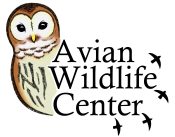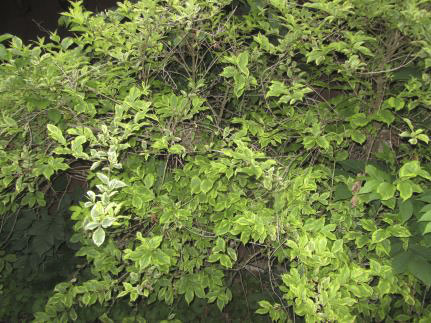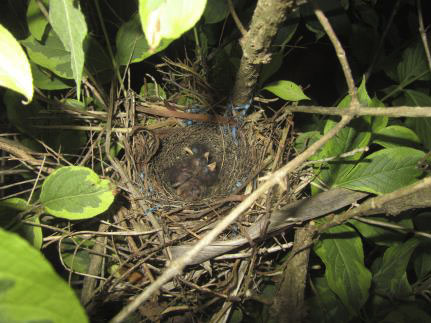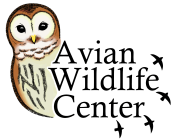Preventing Problems
Each year thousands of injured birds are brought to wildlife rehabilitators. Countless more never get rescued. Many of their injuries could have been prevented by simple changes around the home and some common sense.
For more information contact the Avian Wildlife Center: (973) 702-1957.
Nesting Birds
“Orphans”
Most of the nestling birds people find on the ground are not orphans and have not been thrown out by their parents. If the nestling is not injured and appears healthy, it is best to return it to the nest. Parents will not reject their young because you have touched them.
Nests around the home
Landscape shrubbery can provide attractive nest sites to many birds. Avoid trimming branches and cutting down trees in the spring and summer when birds are likely to be nesting. The nests will be difficult to see, hidden by leaves, until branches are cut. Holes in trees attract cavity-nesting species such as chickadees, bluebirds, and owls. Most young are in the nest for less than a month. Waiting is safest, but check carefully before cutting.
Some nests are built in inconvenient areas around the house. People have been surprised by a protective parent bird dive-bombing visitors. If possible try to avoid the area for the two weeks the young need to grow and leave the nest.
If a nest with young falls out of a tree, it can be returned to the tree. For support, put the nest in a wicker basket and secure to the branches as close to the original location as possible.
Birds in and on Your Home
In the House
A bird may fly through an open door or window and become disoriented. They usually fly up and toward light. Turn off all lights, draw curtains, cover mirrors, and leave one obvious exit that is bright.
In the Chimney
To prevent animals from getting into your chimney, install a wire cap over the top. One exception to this is in older chimneys with nesting Chimney Swifts. Swifts are a beneficial species that feed on small insects (mosquitoes, gnats). Check the page about swifts and contact the Avian Wildlife Center.
Windows
Birds commonly fly into windows because they see a reflection of the outdoors in the glass. To reduce the problem, hang decorations outside the window. There are many products commercially available shown to reduce bird strikes. Check the American Bird Conservancy website, abcbirds.org, for a review of some of the products. You can also contact the Avian Wildlife Center for some window treatments.
Sometimes a bird will attack a window repeatedly in the spring. It is seeing its own reflection, but believes it is another bird trying to move into its territory. Eliminate the reflection by turning on a light inside the window or temporarily putting something on the window that will block the reflection.
Fishing Line and Litter
Discarded fishing line and other garbage can be deadly to wildlife. Birds can swallow fish hooks or become tangled in line to the point where they cannot fly or eat.
Plastic is an equally serious threat. Six-pack rings from cans can easily slip over a duck’s head and become locked around the neck. Cut rings before disposing in garbage. Long strings and shredded fabric can entangle birds.
Poisons
Pesticides, Herbicides, and Rodent Baits
Chemicals commonly used around the home can harm animals, both wild and domestic. Rat poisons that cause rodents to bleed internally will do the same to an animal that eats the poisoned rodent, such as an owl or a pet cat. Chemical lawn treatments have produced neurological disorders in birds that lead to death.
Bluebirds, swifts, swallows, and warblers can surpass a chemical or electric bug zapper in controlling insects and are unquestionably better for the environment.
Cats and Dogs
Pets that are allowed to run loose pose a serious threat to native wildlife and are exposed to more hazards themselves. Most birds caught by cats develop a fatal infection due to bacteria found in a healthy cat’s saliva. Any bird caught by a pet must be brought to a licensed rehabilitator immediately. The best solution is not to allow pets to roam freely.
FAQ
Always take a moment to observe a bird before deciding to intervene. Do not hesitate to phone the Center if you have a question. Some situations that warrant rescue and contacting a licensed rehabilitator:
- A bird that has an obvious injury and is too weak to fly off
- A bird a cat has contacted whether you see an injury or not. The bird needs to be treated with antibiotics
- A bird on the road or roadside that does not fly off when approached. Often there is no obvious external injury, but the bird needs to be treated.
- A bird with flies or ants on it
- An Altricial nestling (sparse down or no feathers at hatching) on the ground. Wrap in a tissue or cloth and keep warm. If not injured and seems active, can be placed back in the nest.
- Duckling or gosling with no mother in sight. Immediately place in a box or container with a towel. Do not put in water. Keep warm. (See Ducklings/Precocial Young)
- A bird that has flown into a window and is stunned. Put bird in a box immediately and see instructions about window collisions
Get a box large enough for the bird to comfortably rest. Put a cloth on the bottom. Gently pick up the bird, place it on the cloth, make sure it is resting on its stomach, not on its back, and cover the box. Let it rest. Do not open the box, but listen for the bird getting active. If it only suffered a minor concussion, it should fully recover within 1 to 2 hours. When you hear it getting active you can take the box outside, open the top, and let the bird fly out on its own power. If the bird takes more than 2 hours to recover, you see an obvious injury, or it cannot fly, please contact us by phone. (See Preventing Problems: Windows)
Your safety as well as the bird’s is important. Call for advice. General recommendations are to put a box over the bird first. In an emergency a towel, blanket, or jacket could be dropped over the bird to initially contain it. Avoid handling with your bare hands. If you are able to contain the bird in a box, have a cloth on the bottom to cushion and prevent from sliding during transport. Make sure the box is covered. A wild bird must never be put in a wire cage where it is likely to injure itself on the wire.
Never attempt to grab a raptor (hawk, owl), heron, or other potentially dangerous bird. Phone for assistance.
Please talk with a licensed rehabilitator. There is a lot of misinformation online about what to feed a bird, so always contact someone who is trained and licensed for the species. Also, if a young bird is cool to the touch, it will not be able to digest food. People often drown a young bird by giving it liquids. Consult an expert.
If the nest is still intact, find a basket just slightly larger than the nest. Secure the basket with wire in the tree or bush as close to where it was as possible. Make sure it is stable. Put the nest with young in the basket. Watch from a distance to see the parents return.
Attracting Birds
Bird Feeding
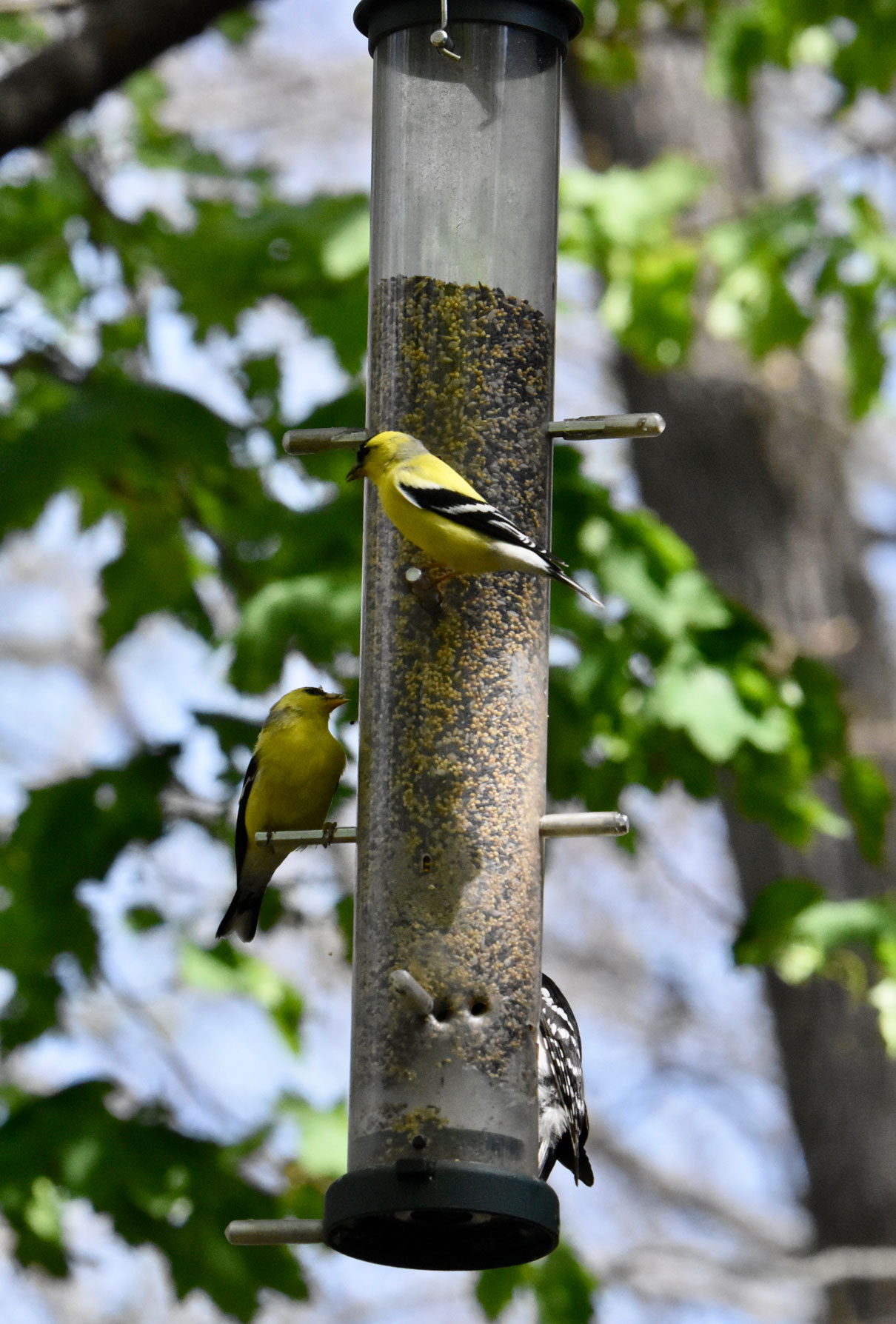 A great way to get to know the birds in your area is to set up feeders where you can watch the birds. During the winter, it can help birds survive if conditions get difficult and natural food is scarce.
A great way to get to know the birds in your area is to set up feeders where you can watch the birds. During the winter, it can help birds survive if conditions get difficult and natural food is scarce.
Recommendations for feeders:
- Use better quality seed. “Economical” seed has a lot of waste that birds will not eat and in the long run is not a savings. Waste seed includes milo, wheat, flax seed, red and gold millets that are not preferred and often tossed out by birds.
- Offering a variety of seed (sunflower, white proso millet, nyjer, safflower, etc.) and different types of feeders will attract a variety of species
- Select feeders that are easy to clean and keep the seed dry
- Do not feed bread or similar baked foods. Birds will eat them, but it offers little nutrition
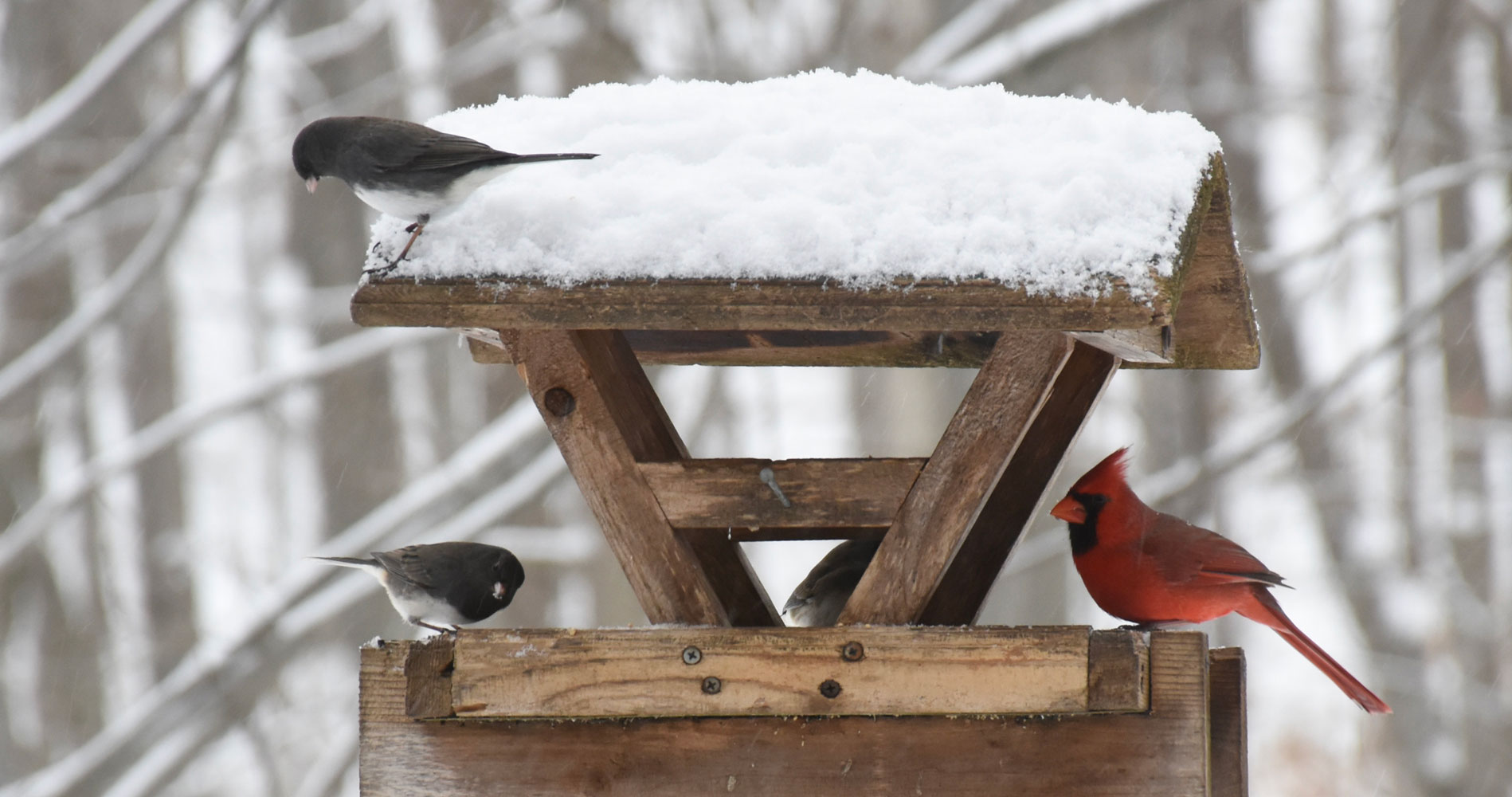 If there are bears in the area, make certain feeders are beyond their reach. Hang them from a line at least 12 feet above the ground. If the feeders are attracting a bear, it is best to remove the feeder for a time.
If there are bears in the area, make certain feeders are beyond their reach. Hang them from a line at least 12 feet above the ground. If the feeders are attracting a bear, it is best to remove the feeder for a time.
Hummingbirds
The best way to attract hummingbirds is by planting flowers. A variety of native flowers provide nectar: cardinal flower, jewelweed, beebalm, trumpet honeysuckle, red columbine, and more.
If you choose to put up a feeder for hummingbirds, select a glass feeder that can be easily cleaned.
- Prepare your own sugar solution using refined, white table sugar. Do not use any other type of sugar or honey, which can be toxic to hummingbirds. The red solution sold in stores is not healthy for the hummingbirds and should not be used.
- Boil four parts water, remove from heat and add 1 part sugar (1 cup water plus ¼ cup sugar). Stir to dissolve and allow to cool.
- Put an amount in the feeder that will last 1 or 2 days. Store remainder in the refrigerator for a day or two.
- Clean the feeder every two days with hot water and a brush.
Hang the feeder in a shady spot near flowers if possible.
Nest boxes
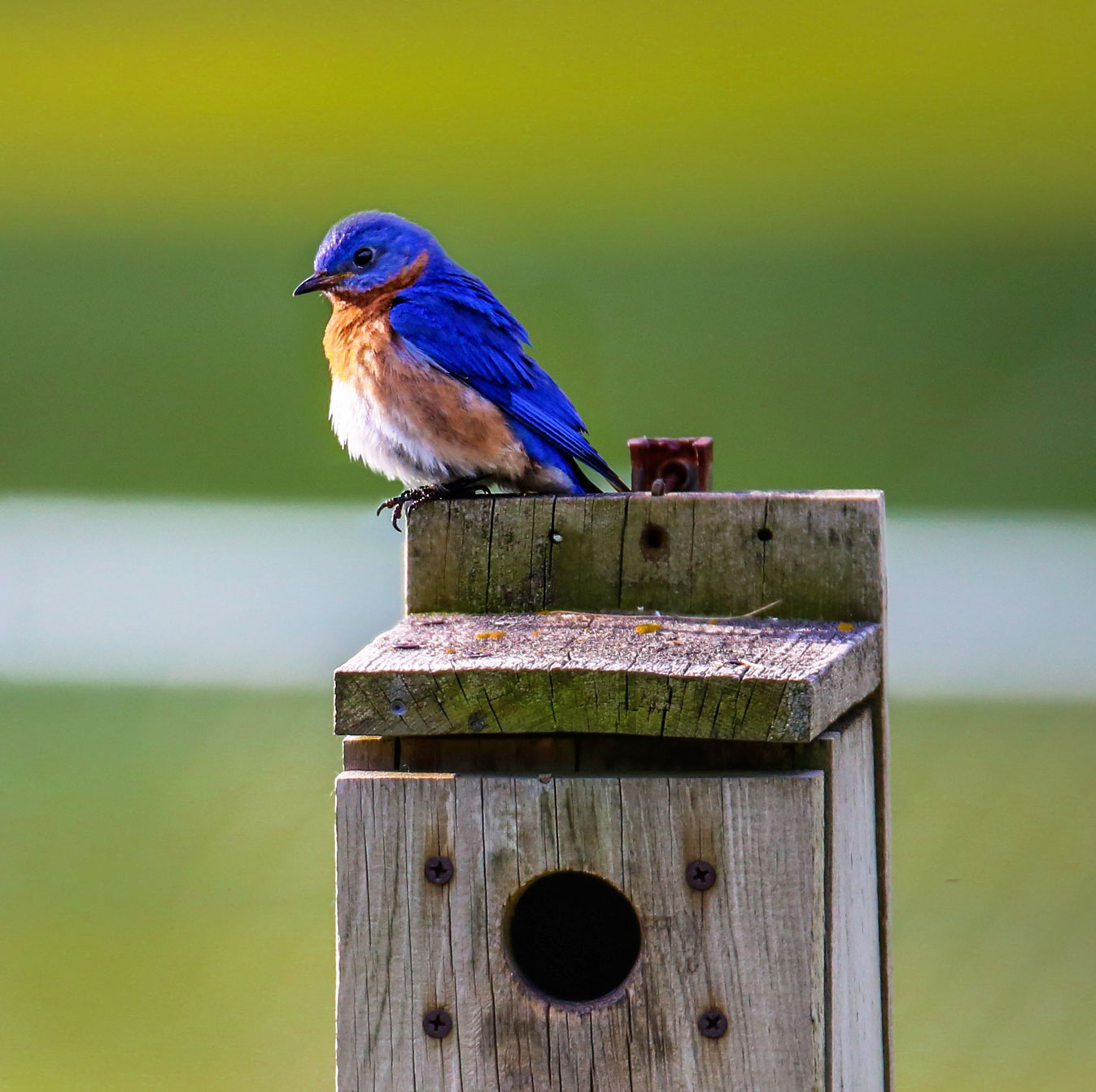 Cavity-nesting birds that cannot create their own holes benefit from bird houses. Eastern Bluebird, House Wren, Eastern Screech Owl, Black-capped Chickadee are a few of these species. Whether shopping for or constructing a birdhouse, certain requirements should be met. The size of the box and the diameter of the entrance hole will depend on the species you want to attract. The Cornell Lab of Ornithology ‘s Nest Watch website and the North American Bluebird Society are two of the reliable resources to check.
Cavity-nesting birds that cannot create their own holes benefit from bird houses. Eastern Bluebird, House Wren, Eastern Screech Owl, Black-capped Chickadee are a few of these species. Whether shopping for or constructing a birdhouse, certain requirements should be met. The size of the box and the diameter of the entrance hole will depend on the species you want to attract. The Cornell Lab of Ornithology ‘s Nest Watch website and the North American Bluebird Society are two of the reliable resources to check.
Boxes should feature the following:
- Boxes should be built from untreated wood an inch thick. Redwood, white cedar, western cedar, and cypress are durable. Rough-cut wood is preferred. Painting is not recommended due to toxic chemicals.
- A sloped roof that extends 2 to 4 inches beyond the sides and front to keep out rain. A line cut across the underside of the roof overhang will create a drip line to also keep rain away from the front.
- 3/8 inch holes in the floor for drainage and 5/8 inch holes at the top of the sides for ventilation. Alternatively, small gaps along the edges will work as well.
- A hinged side wall to allow for easy cleaning after nesting is done.
The inside wall below the entrance hole should be rough or have lines cut across to provide a surface the young birds can climb
Landscaping for wildlife
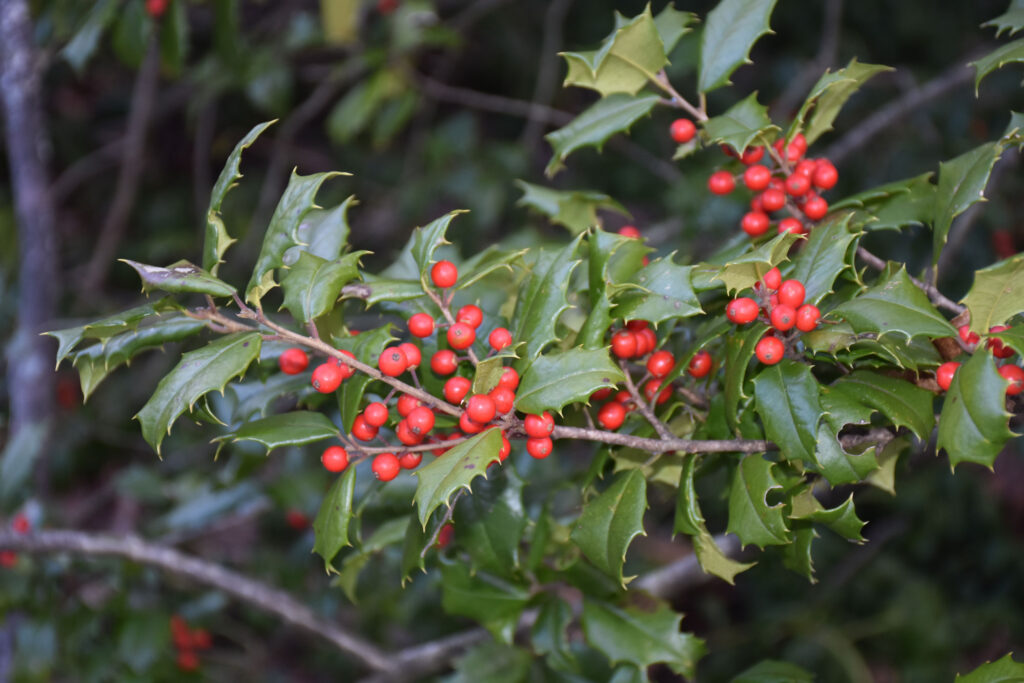 Planting native plants is one of the best ways to attract wildlife and host a landscape that is best suited to the environment. Plants can provide shelter, nesting materials, nest sites, and food for birds. Trees, shrubs, flowers, grasses, mosses can all offer something.
Planting native plants is one of the best ways to attract wildlife and host a landscape that is best suited to the environment. Plants can provide shelter, nesting materials, nest sites, and food for birds. Trees, shrubs, flowers, grasses, mosses can all offer something.
Consider all four seasons when selecting plants. Evergreens can provide needed shelter in the winter and nesting sites in the spring and summer. Flowers can produce nectar and later seeds and fruits to feed a range of species. Birds will also feed on the insects that come to the plants. Even leaves on the ground will be beneficial as birds will search through them for invertebrates and seeds.
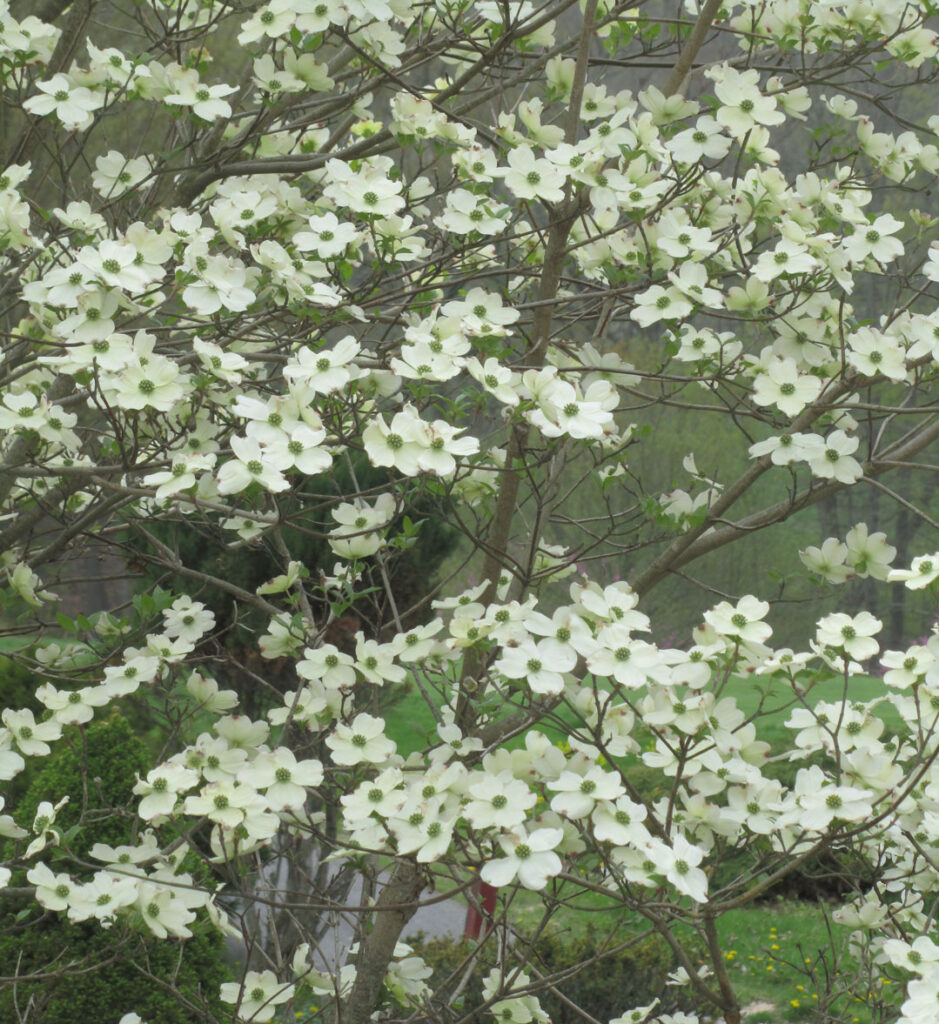 An advantage to natural landscaping is it can be less work for you once established.
An advantage to natural landscaping is it can be less work for you once established.
- Do not use harmful pesticides. Let the wildlife help to control the insect population.
- Reduce a monoculture lawn (less mowing) and create more gardens with native plants.
- Native plants adapted to your zone do not need as much additional watering as non-natives.
For list of plants attractive to wildlife, visit https://www.audubon.org/native-plants.
A Way to Save Eagles: Preventing Lead Toxicity
One Bald Eagle spent days in a tree in someone’s yard with a fractured leg, another was found sprawled on the ground unable to even lift its head, another was sitting on the ground not attempting to move as people approached — one commonality between all three was that they were suffering from toxic lead levels in their bodies. According to a study published in the journal Science, 46 percent of Bald Eagles tested showed chronic levels of lead. Eagles are not the only birds that are poisoned by lead, a neurotoxin that can be lethal in small amounts.
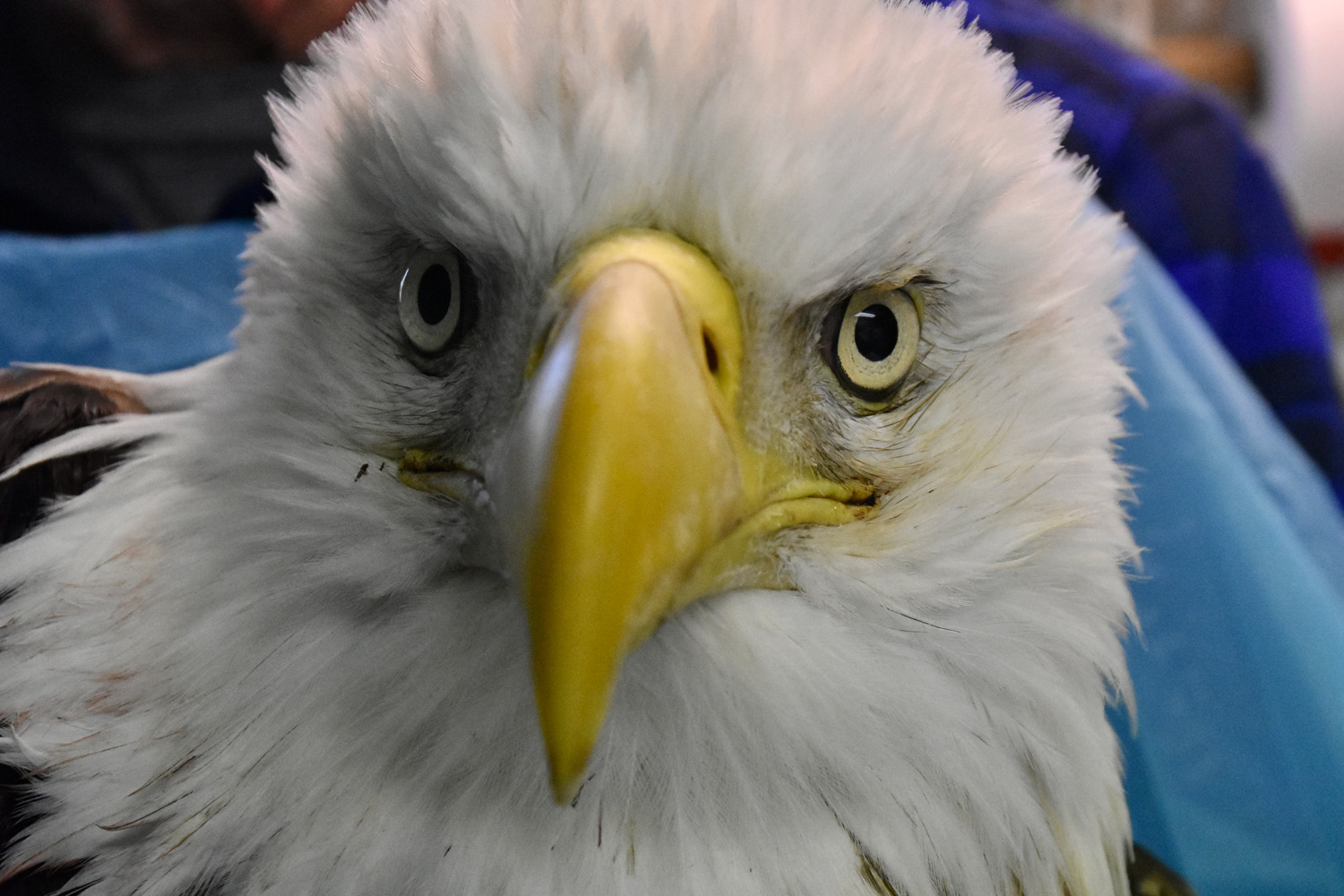 Testing has shown that a primary and preventable source of lead comes from ammunition. Eagles and other birds that are scavengers will feed on remains of animals that have been shot. They ingest the lead, which then circulates into their blood, organs, and can penetrate their bones.
Testing has shown that a primary and preventable source of lead comes from ammunition. Eagles and other birds that are scavengers will feed on remains of animals that have been shot. They ingest the lead, which then circulates into their blood, organs, and can penetrate their bones.
Lead in the body can affect a bird’s survival even if it is not at a lethal concentration. Once absorbed into the blood, lead can cause anemia, decreased growth rates, slowing of digestion, neurologic changes that reduce the animal’s learning capacity, memory, depth perception, balance, and more. An animal’s abilities to feed, reproduce, resist disease, and protect itself from predation and other hazards are compromised.
Hunters have alternatives to using lead shot. Removing this source of lead in the environment could significantly reduce the incidence in eagles. People who regularly consume game meat will also benefit. Testing by the Centers for Disease Control and Prevention showed 50% higher lead levels in this group of people versus in people who did not eat game meat. It is important to educate people about this issue and encourage changing ammunition.
Hunters should check https://huntingwithnonlead.org.
